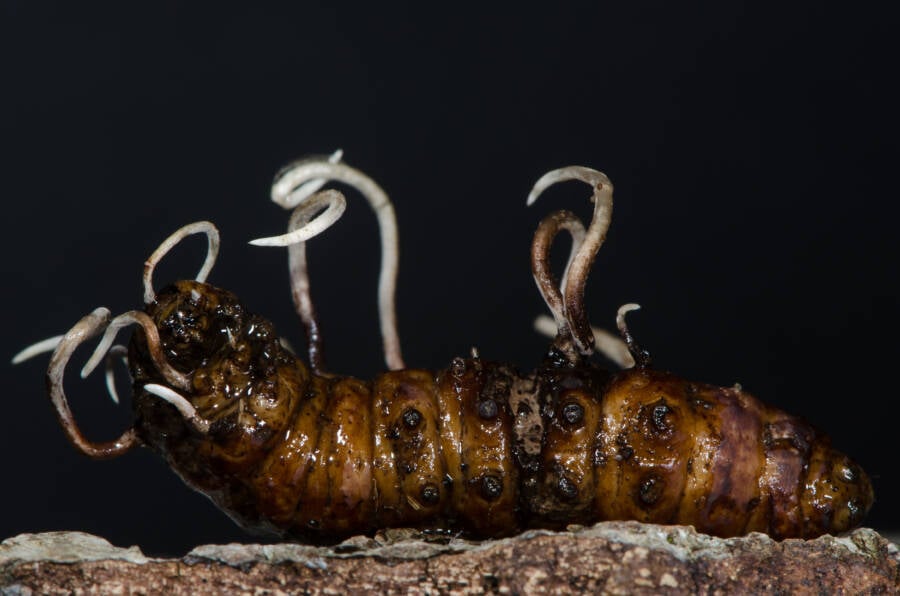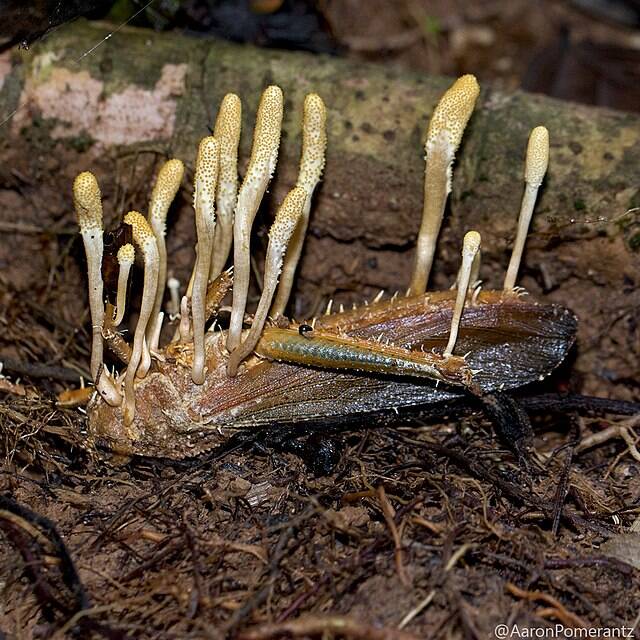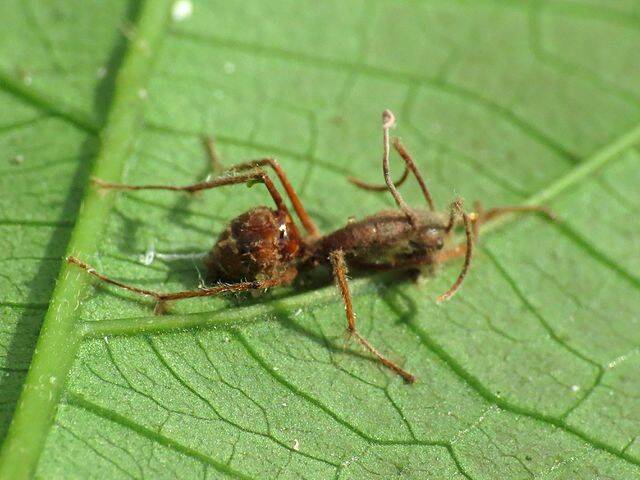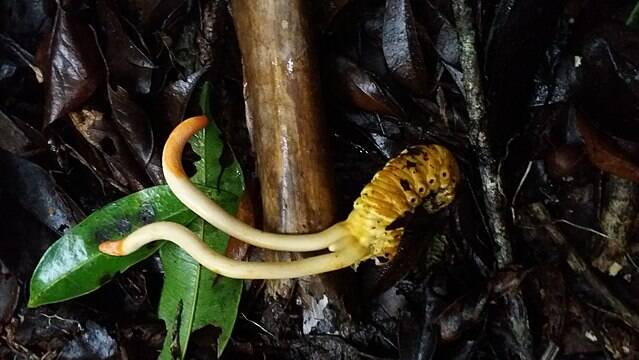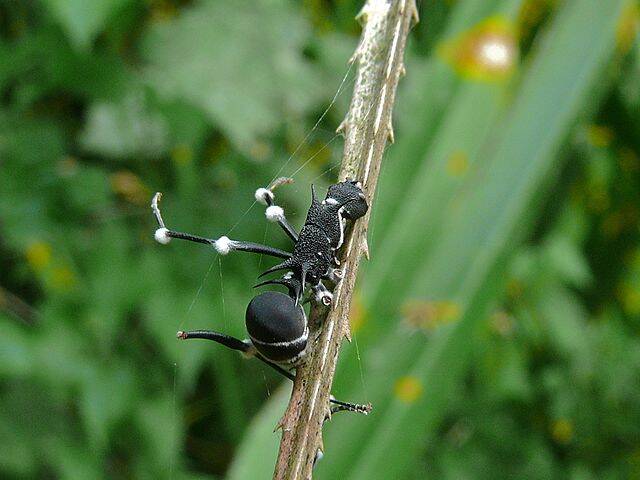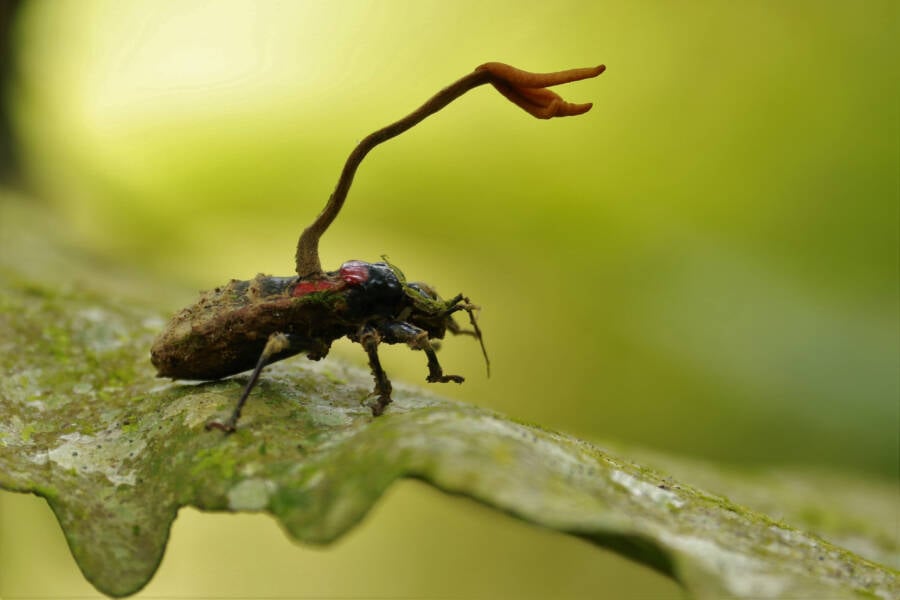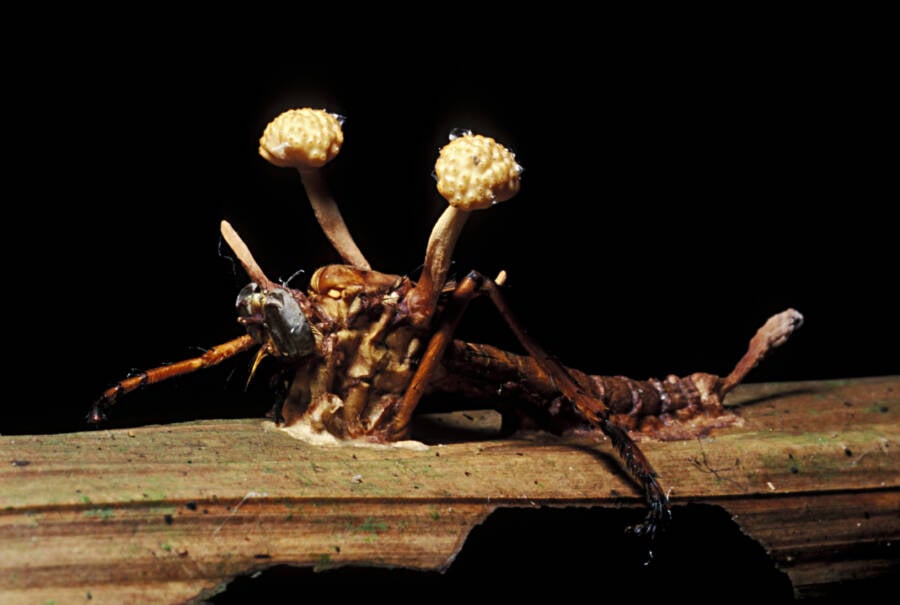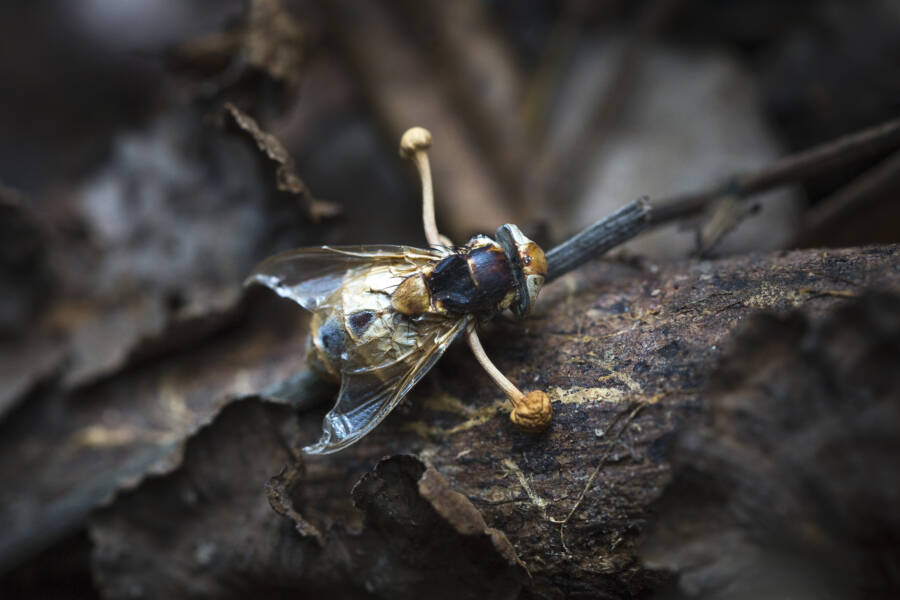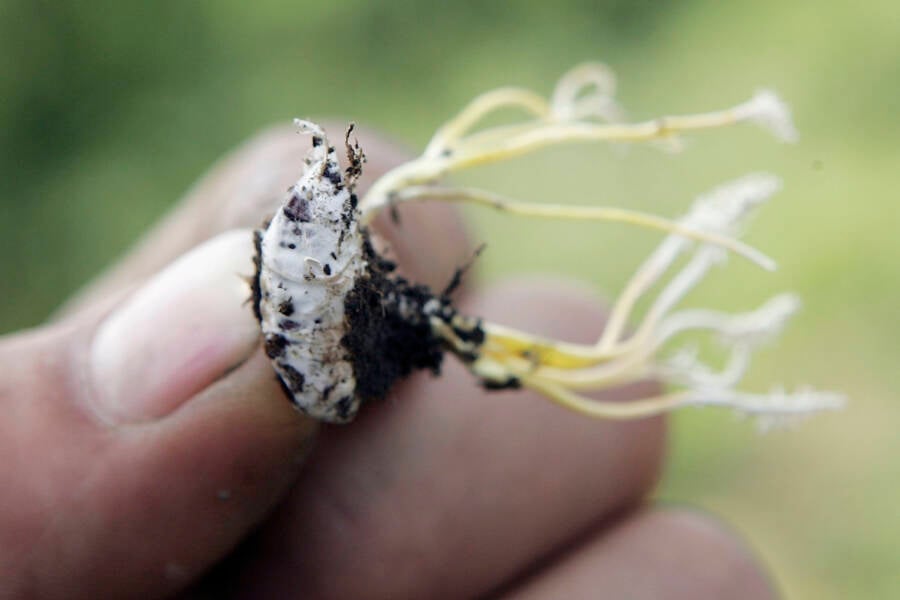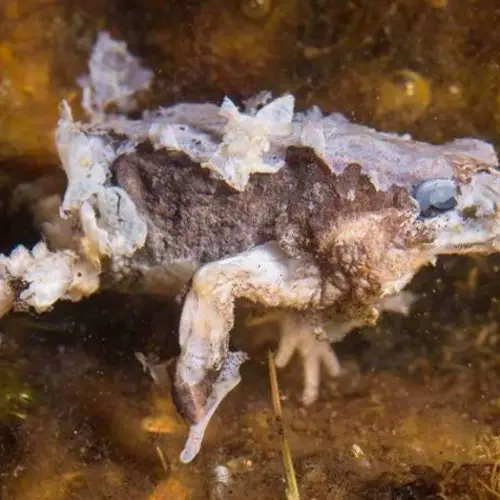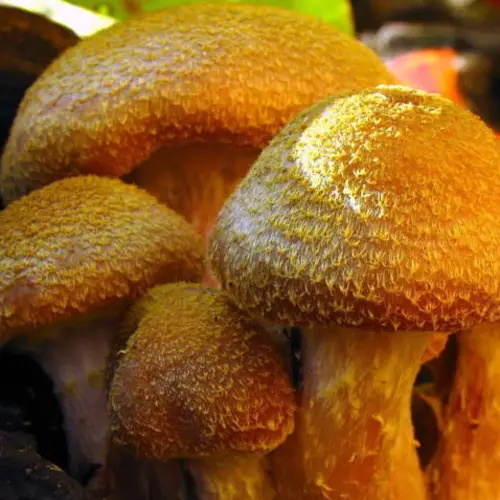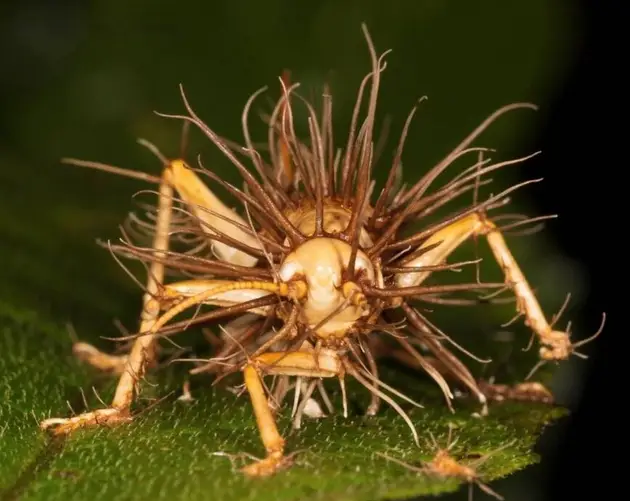In The Last of Us, an infection called cordyceps causes a zombie outbreak — but it's actually a real fungus that kills insects and is used in herbal medicine.
Cordyceps, the “zombie fungus” at the center of HBO’s The Last of Us, is a parasitic fungus that typically thrives in hot, humid climates like tropical forests. There are hundreds of different species of cordyceps — and each of them targets specific types of insects.
Naturally, the question posed by The Last of Us is whether cordyceps could ever infect human hosts. Thankfully, the answer seems to be no — at least for now.
Still, that doesn't make this malicious fungus any less frightening. There's a reason cordyceps is known as a "killer," and it's just as gruesome as you might expect.
What Is Cordyceps And How Does It Spread?
Cordyceps spreads by releasing spores that invade the bodies of its insect hosts. Eventually, the bugs die, and long tendrils of the fungus burst from their corpses. When these fungal sprouts are finished growing, they release additional spores, which then infect any other insects of the same species that are unlucky enough to walk atop them.
As noted by National Geographic, cordyceps has only one goal: to spread to as many hosts as it can.
It gets worse, though. Researchers believe that at least one cordyceps variant, Ophiocordyceps unilateralis, is able to infect ants living in tropical regions, penetrate their exoskeletons, and actually control their behavior. After it's inside the bodies of the ants, the fungus takes control of their nervous systems. It then compels them to climb about ten inches off the ground, latch their jaws onto a plant — and wait to die.
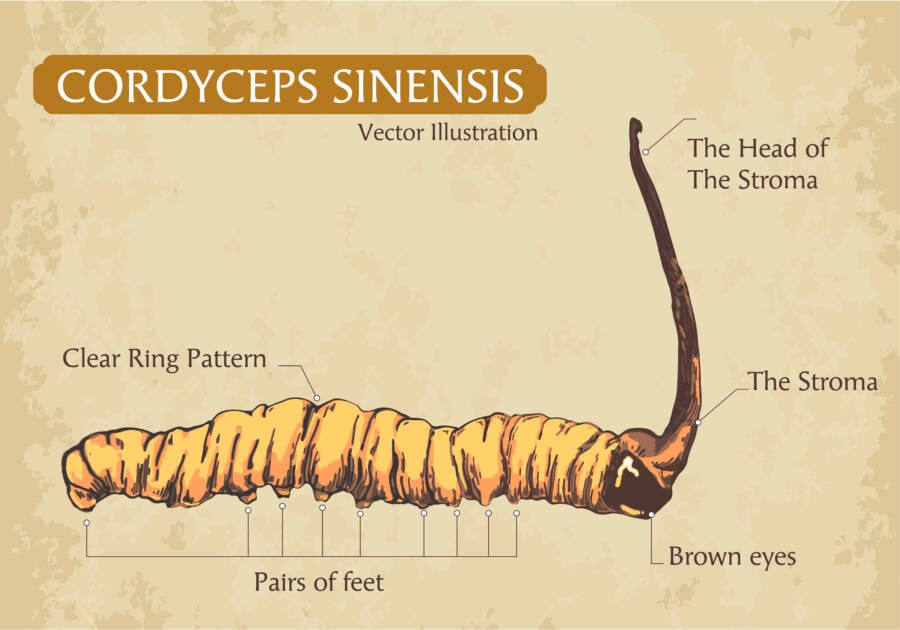

Getty ImagesA vector illustration of Ophiocordyceps sinensis, one version of cordyceps known colloquially as "caterpillar fungus."
And as the ants cling to the plants in their waking coma, cordyceps feeds on their innards, slowly weaving through their bodies until it has completely overtaken the hapless insects. Days later, the fungus emerges from the ants' bodies in eerie tendrils, ready to once again release its spores and seek out its next unlucky victims.
Interestingly, researchers have also found that cordyceps doesn't take over the brains of insects. Instead, it uses bioactive compounds to disrupt its victims' nervous systems and manipulate their muscles directly.
In a sense, cordyceps moves its hosts like a puppet on string — only the strings are inside their bodies.
This is just one species of Ophiocordyceps, though. In total, researchers have identified more than 200 species — all of which infect different creatures, like ants, caterpillars, grasshoppers, cicadas, and even spiders.
One species of cordyceps, Ophiocordyceps sinensis, preys on ghost moths and ghost moth caterpillars, for example. The husks of these infected caterpillars have been used in traditional Tibetan and Chinese medicine for generations. They are prized for their supposed qualities as an aphrodisiac, cancer treatment, and immune booster.
"It's exciting terrain at the fringes of our understanding to look at the extent of how parasites control their host," Barrett Klein, an entomologist at the University of Wisconsin in La Crosse, told National Geographic. "If animals are so easily manipulated, what does that mean about us?"
Could The Cordyceps Fungus Ever Infect Humans?
HBO's The Last of Us — and the game of the same name that preceded it — is centered around the idea that a cordyceps variant could evolve and eventually infect humans. It's certainly a frightening idea, and it's one that is not too deeply rooted in the realm of science fiction.
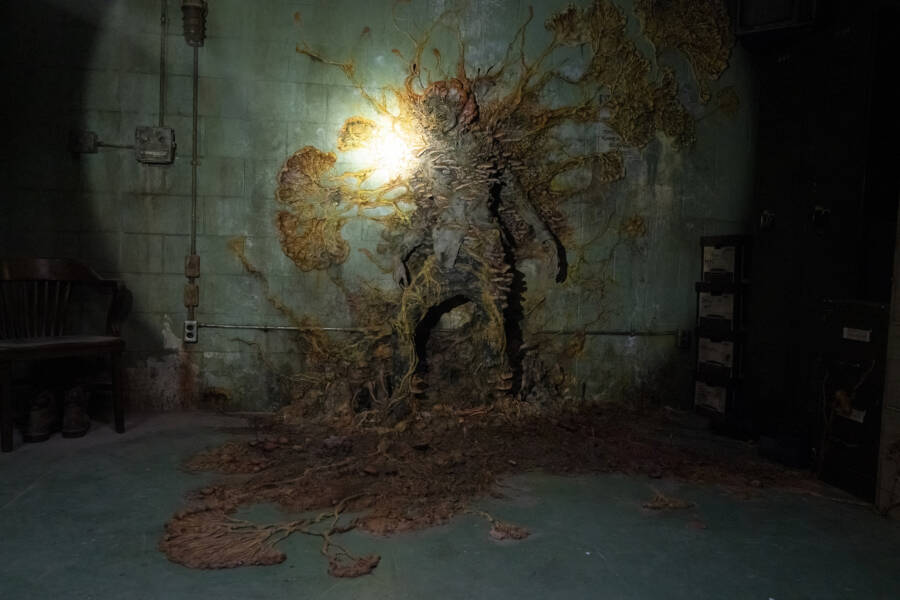

HBOIn The Last of Us, cordyceps spreads through a mycelium network rather than through spores.
Thankfully, the BBC spoke with a microbiologist named Charissa de Bekker, who has studied cordyceps and its effect on zombified ants. She noted that humans don't have much to worry about.
"Our body temperature is simply too high for most fungi to nicely settle and grow — and this is the same for this cordyceps," she said. "Their nervous system is simpler than ours, so it would definitely be easier to hijack the brain of an insect versus our brain, also their immune systems are very different from ours... For this fungus to be able to jump from an insect to us and cause an infection is a very big leap."
That said, cordyceps isn't the only fungus humans have to worry about. In fact, roughly 1.7 million people are killed by fungi each year, and the World Health Organization has identified 19 different fungi that could possibly pose a threat to humanity.
One yeast-based fungus, Candida auris, for example, can invade our blood, nervous system, and internal organs. Another, Cryptococcus neoformans, can infect the nervous system and cause meningitis. Mucormycetes can lead to a flesh-eating disease known as mucormycosis, which often infects the nose, sinuses, eyes, and brain. Mucormycosis can result in a runny nose, one-sided facial swelling and pain, headache, fever, blurred vision, bulging or displacement of the eye — and eventually tissue death.
These are just a few examples, of course, and there are even more cases of fungi that can be highly beneficial to humans. But the point is that fungi, as mysterious and frightening as they are, aren't something to be taken lightly.
So no, it's not likely that cordyceps will cause a zombie outbreak and bring about the end of the world — but don't go breathing in a bunch of spores thinking they won't affect you.
After learning about the "zombie fungus" cordyceps, check out this fungus in Australia that can absorb and secrete gold. Then, see the 2,500-year-old fungus that's as large as a blue whale.
